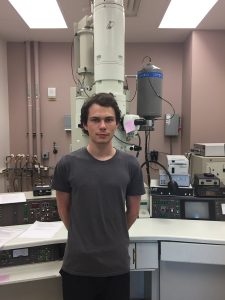I’ve repaired the EDS and it appears to be working correctly now. I’m watching it for signs of the original problem.
Looks like I sent a notice out there that the ESEM was down. It’s online now and being used.
There is a problem keeping the EDS online. I am waiting on a repair part now.
The ESEM is currently down. Jerry will be working on it Monday morning. We will update when we know more.
The STEM is back online now and ready for use. We will pick up with the current reservations.
There was a power outage last night that has caused a problem with the STEM beam. We cancelled this mornings reservations and Pinaki is working on it. Hopefully its ready for this afternoon session. We will update at noon.
I have found a bug in the logbook software. For longer sessions the when you go to logout, the system tries to log you in again (rather than out). If this happens to you just finish logging in then immediately log out. Then send me an email with your session time. This is an important step.
New software is coming soon.

My name is Aleister Kerr. I am an undergraduate student dual majoring in physics and chemistry. I moved here with family from Tucson Arizona in 2017. Once I am finished with my undergraduate degree, I plan on going to graduate school for chemistry or nanoscience. When not at school or working, I enjoy reading about various other fields of science, mainly biology.
This is just a reminder that the ACMAL facilities will be CLOSED Thursday, July 4, 2019. This is a University Closed Holiday so the building will also be locked.
Only those with swipe access will be able to use the instruments.
Please plan your instrument use accordingly.
The ESEM is back online now.